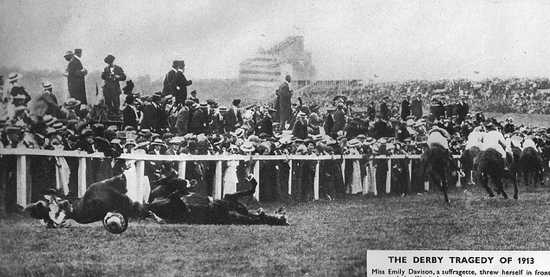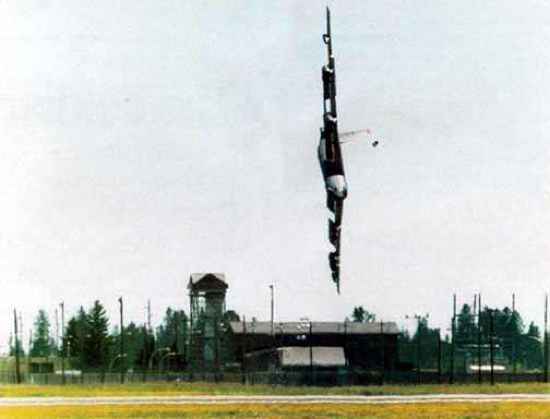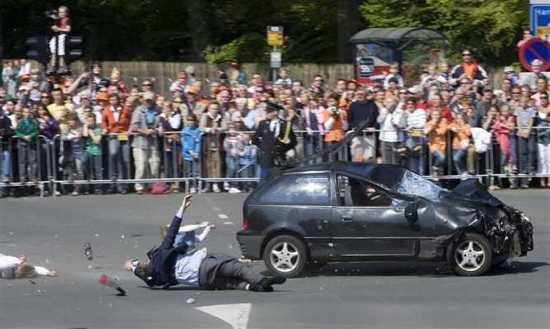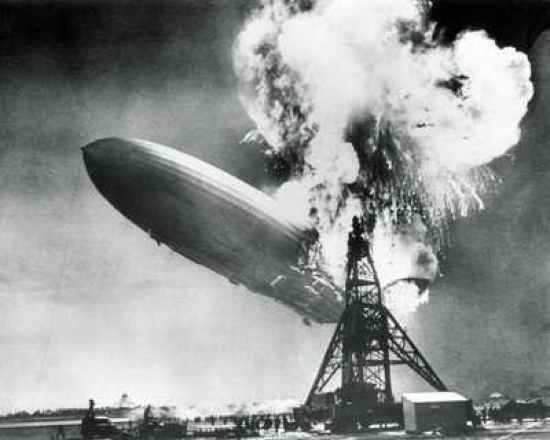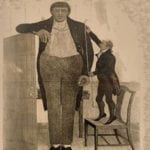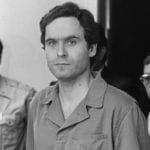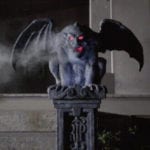Some of the last videos to be removed from the article include the death of British speed racer Donald Campbell, the crash of FedEx Express Flight 80, the assassination of Pakistan Prime Minister Benazir Bhutto, the crash of Formula One champion Ayrton Senna, the Wikileaks footage of an American military helicopter firing in Baghdad and the tragic murder of Neda Agha-Soltan. The video of Neda Agha-Soltan getting shot has been called the most widely witnessed death in human history. It is a shocking piece of videotape.
Date: September 5, 1931 In the history of football, a number of tragic events have taken place on the pitch in which an athlete has been killed. Some notable occurrences include the death of Hungarian footballer Miklos Feher, Cameroonian international footballer Marc-Vivien Foe and Spanish player Antonio Puerta. We will be examining the loss of Scottish footballer John Thomson. In 1909, Thomson was born in Kirkcaldy and grew up in the mining community of Cardenden, in Fife. As John entered his teenage years, he began to stand out as a great footballer. Thompson caught the attention of Celtic F.C. manager Willie Maley, who was looking for a goalkeeper and heard of the young sensation from the east of Scotland. After playing against Denbeath Star on October 30, 1926, John Thomson signed a professional contract with Celtic for £10 at the age of 17. He immediately stood out as a great keeper. John Thomson was known for his hard-nosed play and was willing to sacrifice his body for the good of the team. His first major injury happened on February 5, 1930, against Airdrie, in which Thomson broke his jaw, fractured many ribs, damaged his collarbone and lost two teeth. His friend Jim Ferguson asked “What was in your mind when you made the goal-saving dive”? John replied, “I had to go for it.” On September 5, 1931, Celtic was playing their old rivals Rangers at Ibrox Stadium in Glasgow, in front of 80,000 spectators. Early in the second half of the game Thomson and Rangers player Sam English collided in the goalie box. During the play, John Thomson hit his head on Sam English’s knee, fracturing his skull and rupturing an artery in his right temple. John was rushed to the hospital with a deep depression in his skull. At 5pm he suffered a major convulsion and was pronounced dead later that evening. John Thomson was only 22-years-old. Around 30,000 people attended his funeral in Cardenden on September 9, 1931. Many of the mourners walked the journey of 55 miles from Glasgow. [Video Clip]
Date: June 4, 1913 Emily Davison was a women’s suffrage activist who lived in England during the early 1900s. In 1906, she joined the Women’s Social and Political Union (WSPU) and immediately involved herself in their more militant activities. Davison was arrested and imprisoned for various offences in her life, including a violent attack on a man she mistook for the Chancellor of the Exchequer, David Lloyd George. She went on a hunger strike in Strangeways Prison, and jumped down an iron staircase in Holloway Prison. In Holloway, she landed on wire netting 30 feet (10 m) below the staircase, which saved her life. Emily suffered severe spinal damage in the fall. On June 4, 1913, Emily Davison attended the Epsom Derby in Surrey, England. During a horse race, Emily Davison was trampled to death by King George V’s horse Anmer. She unexpectedly jumped in front of the animal at full speed. Pathe News captured the incident on film. Eyewitnesses at the time were divided as to Emily’s motivation, with many believing that Davison had simply intended to cross the track, thinking that all the horses had passed, while others reported that she had attempted to pull down the King’s horse. Emily Davison died four days after the collision, due to a fractured skull and internal injuries. Even today, it remains unclear if martyrdom was her intention. At the time of her death, Davison was carrying the banner of the WSPU. It has been suggested that she might have been attempting to attach the flag to Anmer. [Video Clip]
Date: March 4, 1990 Hank Gathers was an American college basketball star at Loyola Marymount University. After transferring from USC, Gathers helped lead the Lions to a 28–4 record in the 1988 basketball season. As a junior at Marymount, Hank Gathers became the second player in NCAA Division I history to lead the nation in scoring and rebounding in the same season, averaging 32.7 points and 13.7 rebounds per game. As a senior in 1989–90, he was a candidate for player of the year and had been projected as an NBA lottery pick. In the 1990 season, LMU averaged an astonishing 122.4 points per game, a record that is still held today. At 6’7″ and 210 pounds, Gathers was Loyola Marymount’s strongest inside player. “I don’t care much about the points,” said Gathers. “In fact, I should lead the nation in scoring because of my rebounding. Anybody can score 30 points a night if that’s what he’s concentrating on, but rebounding is special because it comes from the heart.” Sadly, Hank Gathers first sign of health troubles came on Saturday, December 9, 1989, when he collapsed at the free-throw line during an LMU home game. He was found to have an abnormal heartbeat and was prescribed the beta blocker Inderal. However, Gathers felt the medication adversely affected his play, and he soon cut back on his dosage. On Sunday, March 4, 1990, in Los Angeles, Gathers collapsed with 13:34 left in the first half of the WCC tournament quarterfinal game against Portland University, just after scoring a tomahawk dunk on an alley-oop pass from point guard Terrell Lowery that put the Lions up 25–13. The event was captured on video. After hitting the ground, Hank attempted to get up, telling the trainers, “I don’t want to lie down!”, then shortly after that he stopped breathing. Hank was declared dead on arrival at a nearby hospital. He was only 23-years-old. An autopsy found that he suffered from a heart-muscle disorder, hypertrophic cardiomyopathy. After his death, Gathers was named a consensus second team All-American and first team All-WCC selection for the season. He finished his career averaging 28.0 points per game and making 59% of his field goals. As his heart would show, Hank Gathers averaged 11.1 rebounds. [Video Clip]
Date: July 23, 1982 Fatalities: 3 People Twilight Zone: The Movie is a 1983 film produced by Steven Spielberg and John Landis as a theatrical version of the 1960s TV series created by Rod Serling. The 1983 film remade three classic episodes of the original series and included one original story. John Landis directed the prologue and the first segment, Steven Spielberg directed the second, Joe Dante the third, and George Miller directed the final segment. On July 23, 1982, an accident occurred while director John Landis filmed the Time Out scene of the movie, with actor Vic Morrow and child performers Myca Dinh Le (age 7) and Renee Shin-Yi Chen (age 6). During the scene, a helicopter crashed into the actors. The helicopter lost control after a series of fireballs were released for pyrotechnic effects. One of the explosions caused the low-flying craft to spin out of control and land right on top of Morrow and the two children. Morrow and Myca were decapitated by the helicopter’s top rotor blades and Renee was impaled by one of the skids. All three of the actors were killed instantly. It was a big news story and evidence emerged that Myca and Renee were being paid under the table to get around California’s child-labor laws. The accident led to civil and criminal action against the filmmakers and John Landis. In the proceedings, nobody was convicted or held criminally culpable for the accident. In the aftermath of the event, regulations were changed involving children working on movie sets and during special effect-heavy scenes. Unlike most deadly accidents that take place on film sets, the actual footage of the Twilight Zone crash has been released to the public. The video was widely used in the criminal trial. The clip shows a lawyer describing the sad day and then it shows the actual crash. The tragedy remains one of the worst accidents in the history of Hollywood. [Video Clip]
Date: January 29, 1994 Ulrike Maier was a decorated Austrian alpine ski racer. She was born in Rauris and won the Super-G gold medal at the FIS Alpine World Ski Championships in both 1989 and 1991. She also won the giant slalom silver medal in 1991, and recorded 5 World Cup victories in her lifetime. On January 29, 1994, during a World Cup downhill race in Garmisch-Partenkirchen, Germany, Maier crashed while skiing at 120 km/h (75 mph) down the slope and broke her neck. She died shortly after being evacuated to the hospital in nearby Murnau. Ulrike Maier was only 26-years-old. Her fatal crash happened during a race which was broadcast on live television. Initially, it was claimed that her death was caused by hitting a wooden timing post. The information was based on the video, which shows Maier veering hard to the right and apparently hitting and moving a solid object. After the accident, Maier’s fiancé Hubert Schweighhofer criticized the organizers of the race and filed suit against them. Several months later the court ruled that Maier actually did not hit the timing post with her head but probably broke her neck by crashing into a pile of snow on the border of the race course. The court did not find any negligence from the organizers and dismissed the suit. The incident remains one of the most tragic sporting events ever caught on tape. [Video Clip]
Date: June 24, 1994 Fatalities: 4 People On June 24, 1994, a USAF B-52H bomber crew, stationed at Fairchild Air Force Base in Washington state, was scheduled for an aircraft demonstration flight. The crew consisted of pilots Lt Col Arthur “Bud” Holland, Lt Col Mark McGeehan, Col Robert Wolff, and weapon systems officer Lt Col Ken Huston. The flight plan called for a demanding series of low-altitude passes, 60 degree banked turns, a steep climb and a touch-and-go landing on Fairchild’s runway 23. The flight was Robert Wolff’s “fini flight”, a common tradition in which a retiring USAF aircrew member is met shortly after landing by relatives, friends and coworkers, and doused with water. As the B-52 took flight and prepared for the exercise, the aircraft was instructed to make a go-around because a KC-135 was on the runway. Pilot Bud Holland radioed the control tower and asked for permission to execute a 360 degree left turn, which was immediately granted by the controller. To avoid restricted airspace, Holland directed the aircraft in an extremely tight, steeply banked turn while maintaining a low 250 foot (75 m) AGL altitude. Approximately three quarters of the way around the turn, the aircraft banked past 90 degrees, descended rapidly, and hit the ground. Upon impact, the plane exploded and killed all four crew members. McGeehan and Huston were able to eject before the crash, but both men were killed by the ensuing fireball. It has been determined that pilot Bud Holland flew the aircraft beyond its operational limits. Unfortunately, it was not the first time in Holland’s career that he displayed poor judgment. The investigation concluded that the crash was due to a number a factors, including Holland’s personality and behavior. Also at fault was the Air Forces delayed reaction to earlier incidents involving Holland, and the sequence of events during the aircraft’s final flight. The crash is now used in military and civilian aviation environments as a case study in teaching crew resource management. After the incident, the video of the B-52 crash was widely distributed. [Video Clip]
Date: April 30, 2009 Fatalities: 8 People On April 30, 2009, the Dutch Royal Family was celebrating the national holiday of Koninginnedag with a parade in Apeldoorn, Netherlands, when a man drove his vehicle at a high speed into a crowd of people in the vicinity of Queen Beatrix and Prince Willem-Alexander. The vehicle hit a collection of citizens lining the street, leaving eight people dead and ten injured. The car missed the royal family and crashed into a monument at the side of the road. No members of the royal family were harmed. The attack was the first of its kind on the Dutch Royal Family in modern times. The driver was identified as 38-year-old Dutch national Karst Roeland Tates. After being taken to the hospital, Tates died from his injuries. The attack occurred just before an open-top bus carrying the Dutch Royal Family made its last turn towards the palace of Het Loo in Apeldoorn. In the assassination attempt, Tates crashed his black Suzuki Swift into a large group of people, just missed the bus carrying the royals, and slammed into De Naald, which is a royal monument. The attack and subsequent search of the vehicle was viewed on live television. Even to this day, Tates’ motive for the event remains unclear. At a press conference, police reported that, while the suspect was still conscious, he told them he was attempting to kill the royal family. [Video Clip]
Date: February 18, 2001 Dale Earnhardt was an American race car driver, best known for his career in NASCAR’s top division. He is notable for his success in the Winston Cup Series (now the Sprint Cup Series), winning 76 races. Earnhardt’s seven championships are tied for most all-time with Richard Petty. On February 18, 2001, Dale Earnhardt was competing in the Daytona 500, a NASCAR-sanctioned automobile race held at Daytona International Speedway, in Florida. Coming into the final lap of the race, Earnhardt was running in third place. Ahead of him were two of his race team’s cars, the blue #15 driven by Michael Waltrip and the red #8 run by his son Dale Earnhardt Jr. As the race progressed, Earnhardt was blocking the attempts of driver Sterling Marlin to pass. During the final lap of the race, Marlin and Earnhardt bumped, with the right front of Sterling’s car coming into contact with the left rear of Earnhardt’s. The contact caused Dale’s vehicle to veer off and turn sharply to the right. He collided with the wall at an estimated speed of 155 to 160 mph. Almost instantly, as the front of Earnhardt’s car made impact with the wall, the right-rear wheel assembly broke off the car, the passenger-door window blew out, and the hood pins severed, causing the hood to flap open and slam against the windshield. Dale Earnhardt was killed instantly in the crash. The official cause of Dale Earnhardt’s death in the medical examiners autopsy report was listed as “blunt force injuries of the head”. In the aftermath of the accident, there were several safety improvements made in the sport of stock car racing. Many teams migrated from traditional five-point safety harnesses to a six-point unit. Two months later, after a crash during an ARCA race that killed driver Blaise Alexander, NASCAR finally mandated the use of head and neck restraints in all competition. The video of Dale Earnhardt’s final ride is chilling and a reminder of how dangerous car racing is. [Video Clip]
Date: May 6, 1937 Fatalities: 36 People An airship or dirigible is a type of “lighter-than-air aircraft” that can be steered using rudders and propellers. The airship uses a large “envelope” filled with gas to stay afloat. In the past, hydrogen gas was used, but nowadays helium is preferred because of its lack of flammability. Airships were the first aircraft to enable controlled, powered flight, and were widely used before the 1940s. Rigid airships are a type of airship that holds a full skeleton. They are meant for transportation. Rigid airships were used from the beginning of the 1900s to the end of the 1930s. LZ 129 Hindenburg was a large German commercial passenger rigid airship that was designed and built by the Zeppelin Company. The Hindenburg was the longest (245 meters, 803.8 feet) and largest by volume (200,000 m3, 7,062,000 cubic feet) flying machine of its kind. After opening its 1937 season by completing a passage to Rio de Janeiro in late March, the Hindenburg departed from Frankfurt on the evening of May 3rd to complete its first of 10 round trips between Europe and the United States. Around 7:00 p.m., at an altitude of 650 feet (200 m), the Hindenburg approached the Lakehurst Naval Air Station, in New Jersey. At 7:25pm, under bad weather conditions, witnesses reported seeing blue discharges and flames on the aircraft. It is unknown where the fire originated, but as the Hindenburg crashed into the ground, the hydrogen ignited and burned. Careful analysis of the event by Addison Bain of NASA, indicated that the rate of the fire was about 49 ft/s (15 m/s), resulting in a total destruction of 16 seconds. Five newsreel cameramen captured the crash on tape. Nobody was able to film the moment when the fire started. The disaster was a major story in 1937. The news was spawned by the video footage and photographs, as well as the live eyewitness radio report of Herbert Morrison. Morrison’s broadcast remains one of the most famous in history. His words, “Oh, the humanity!” resonate with the impact of the disaster. Despite the violent fire, many of the crew and passengers survived the crash. Of the 97 people on the Hindenburg, 35 died. One person was killed on the ground, bringing the total fatalities to 36. The cause of the fire remains a mystery. However, a variety of hypotheses have been put forward, including the theory that a static spark ignited the hydrogen. The Hindenburg crash eliminated public confidence in passenger-carrying rigid airships. [Video Clip]
Date: December 26, 2004 Fatalities: 230,000 People On December 26, 2004, an undersea megathrust earthquake occurred off the west coast of Sumatra, Indonesia. The earthquake triggered a series of devastating tsunamis along the coast of most landmasses bordering the Indian Ocean, killing over 230,000 people in fourteen countries. The event was one of the deadliest natural disasters in recorded history. Indonesia was the hardest hit, followed by Sri Lanka, India and Thailand. With a magnitude of between 9.1 and 9.3, the earthquake was the third largest ever recorded. Sadly, relief agencies reported that one-third of the casualties were children. The 2004 earthquake was the biggest in the Indian Ocean in 700 years, or since around A.D. 1400. The event has been described as the deadliest natural disaster since the 1976 Tangshan earthquake and the 1970 Bhola cyclone. The Indian Ocean earthquake and tsunami has caused an enormous amount of environmental problems. Severe damage has been reported in mangroves, coral reefs, forests, coastal wetlands, vegetation, sand dunes and rock formations. The Great Nicobar and Car Nicobar Islands were the worst hit among all the islands because of their proximity to the quake and relative flatness. Entire islands were washed away by the ocean, and the island of Trinket was split in two. Communications are yet to be restored with the Nancowry group of islands. Some of the Nancowry Islands were completely submerged in the disaster. The tsunami also had a severe humanitarian and political impact in Sweden, which was the hardest hit country outside Asia. 543 Swedish tourists, mainly in Thailand, died in the event. The tsunami caused the Queen of the Sea rail disaster, which occurred when a crowded passenger train was destroyed on a coastal railway in Sri Lanka by the tsunami. More than 1,700 people died in the crash, making it the most deadly train wreck in history. A large number of people captured the tsunami on tape. This video includes a collection of separate clips. [Video Clip]
Date: November 16, 1980 Krishnan Nair, better known by his stage name Jayan, was an Indian film actor who worked in Malayalam cinema. During his film career, Jayan was widely recognized for his elaborate stunts. He has been acclaimed as the first action hero of Malayalam cinema. In November of 1980, Jayan was working on the film Kolilakkam. He was shooting the climactic scene of the movie in Sholavaram, near Chennai, Tamil Nadu. The scene involved a dangerous stunt that had Jayan boarding an airborne helicopter from a motorbike. During the action, Jayan stood up on the moving motorcycle, jumped to the flying helicopter, and was in the process of entering the cab when the helicopter crashed and hit the ground. At the time of the crash, Jayan was hanging from the helicopter. He was badly injured in the incident and later died from his injuries. After his death was confirmed, a slide was added to his movie Deepam, which was running to packed houses. The slide informed the viewers of his death. In response to the news, a large number of his fans burst into tears. The list of stunts performed by Jayan during his film career is impressive. In modern times, the expansion of the internet and video sharing has given him cult status. The screen persona of Jayan made a comeback in early 2000s, with cartoons, emails and mimicry portraying him as a comic superhero. Since Jayan’s death, conspiracy theories have emerged regarding the circumstances of the crash, primarily because the pilot and his co-star Balan K. Nair, who were both in the helicopter, survived with minor or no injuries. The footage of Jayan completing the stunt can be viewed in the movie Kolilakkam. I have included the film scene. In the clip, you can see just how dangerous the stunt was and the circumstances that led to Jayan’s untimely death.

